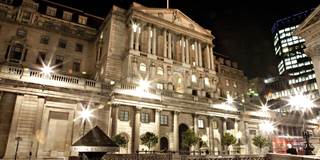Central banks’ large-scale quantitative easing takes them into uncharted territory, where the boundary between monetary and fiscal policy is blurred, and where negative interest rates create political pressures and protests from savers. Central bankers will have to address these concerns, or risk a political backlash.
LONDON – The United Kingdom was late to adopt central-bank independence, because then-Prime Minister Margaret Thatcher firmly opposed allowing unelected bankers to control interest rates. She famously asserted that she would never hand that control away, and the Bank of England was not set free until 1997, when Tony Blair’s first Labour government was elected.
The Old Lady of Threadneedle Street, as the BoE is known, was 303 years old before she was allowed to make her own decisions – and her own mistakes. While both the US Federal Reserve and the German Bundesbank had long been independent, most other European countries followed suit only in the run-up to establishing a monetary union. For its part, the Bank of France had, since Napoleon, been left “in the hands of the government, but not too obviously so.”
For the last 20 years, central-bank independence has marked a kind of “end of history” for monetary policy, after many other regimes were tried and failed. In the years before the 2008 global financial crisis, independent central banks were seen as successful in controlling inflation; and countries with sizable fiscal deficits were especially enthusiastic about central-bank independence because they benefited from lower long-term interest rates. Central banks that also regulate the banking industry were asked tough questions about their insouciance in the face of rapid credit expansion, but they were widely praised for their prompt and decisive response when trouble hit.

LONDON – The United Kingdom was late to adopt central-bank independence, because then-Prime Minister Margaret Thatcher firmly opposed allowing unelected bankers to control interest rates. She famously asserted that she would never hand that control away, and the Bank of England was not set free until 1997, when Tony Blair’s first Labour government was elected.
The Old Lady of Threadneedle Street, as the BoE is known, was 303 years old before she was allowed to make her own decisions – and her own mistakes. While both the US Federal Reserve and the German Bundesbank had long been independent, most other European countries followed suit only in the run-up to establishing a monetary union. For its part, the Bank of France had, since Napoleon, been left “in the hands of the government, but not too obviously so.”
For the last 20 years, central-bank independence has marked a kind of “end of history” for monetary policy, after many other regimes were tried and failed. In the years before the 2008 global financial crisis, independent central banks were seen as successful in controlling inflation; and countries with sizable fiscal deficits were especially enthusiastic about central-bank independence because they benefited from lower long-term interest rates. Central banks that also regulate the banking industry were asked tough questions about their insouciance in the face of rapid credit expansion, but they were widely praised for their prompt and decisive response when trouble hit.